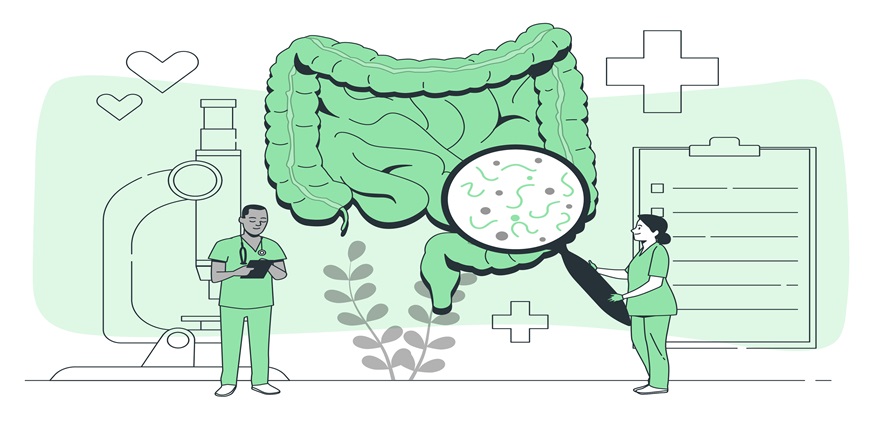





No lab centers are available in this city

Max Lab
Apr 03, 2024
Blood pressure is the force exerted by circulating blood on the walls of blood vessels as the heart pumps. Measured in millimeters of mercury (mm Hg), blood pressure readings provide vital insights into one's overall health and cardiovascular well-being. Understanding normal blood pressure readings according to age is crucial for individuals. By familiarizing themselves with different blood pressure ranges, individuals can better assess, monitor, and manage their cardiovascular health proactively.
Blood pressure readings consist of two numbers, for instance, 120/80 mm Hg, both of which hold significance. The top number, known as systolic pressure, indicates the force exerted on artery walls when the heart contracts to pump blood. Conversely, the bottom number, diastolic pressure, represents the pressure within the arteries during the intervals between heartbeats. Although the unit "mm Hg" stands for millimetres of mercury, modern electronic pressure gauges have replaced traditional mercury-based instruments, while retaining the abbreviation.
For healthcare professionals, blood pressure serves as a crucial indicator of an individual's cardiovascular health. Individuals with high blood pressure, or hypertension, face an elevated risk of developing heart-related complications and damage to blood vessel walls. On the other hand, low blood pressure, or hypotension, is generally considered a sign of good health, although it may be symptomatic of underlying conditions, such as severe infections, in certain scenarios.
A blood pressure reading is categorised as normal when both the systolic (top) and diastolic (bottom) numbers are below 120/80 mm Hg, respectively. An elevated blood pressure range is defined by a systolic value between 120-129 mm Hg, while the diastolic value remains under 80 mm Hg.
However, if the systolic reading is 130 mm Hg or higher, or the diastolic reading is 80 mm Hg or above, the blood pressure is classified as high, indicating hypertension.
When evaluating an individual's cardiovascular well-being, healthcare professionals rely on age-specific blood pressure charts. It's important to note that normal blood pressure readings ranges can vary slightly across different sources, so it's advisable to consult multiple references when assessing blood pressure readings. However, as a general guideline, for adults, a systolic pressure below 120 mm Hg and a diastolic pressure below 80 mm Hg are usually considered within the normal range for blood pressure levels.
By referring to these age-categorised blood pressure charts, healthcare providers can accurately interpret an individual's readings in the context of their specific age group. This approach ensures a more comprehensive understanding of the person's cardiovascular health status and aids in making informed decisions regarding any necessary interventions or management strategies.
For those seeking a reference guide categorised by age, the following blood pressure chart can serve as a useful resource:
|
Age Group |
Men (mm Hg) |
Women (mm Hg) |
|
18-39 years |
119/70 |
110/68 |
|
40-59 years |
124/77 |
122/74 |
|
60+ years |
133/69 |
139/68 |
It's important to note that these values are general guidelines, and individual variations may occur. Let's delve deeper into the specifics of each age group:
Young Adults (18-39 years)
During this stage, blood pressure levels typically remain stable within the normal range for most individuals. However, regular monitoring is still advised to identify any potential deviations early on.
Middle-Aged Adults (40-59 years)
As people approach middle age/adult, blood pressure may gradually start to rise. This is when adopting a healthy lifestyle, with a balanced diet and regular exercise, becomes crucial in maintaining optimal blood pressure levels.
Older Adults (60+ years)
In the later stages of life, blood pressure often continues to increase. Vigilant monitoring becomes even more vital during this phase, as uncontrolled high blood pressure can heighten the risk of severe complications like heart disease and stroke.
While these age-specific ranges serve as a reference, it's essential to consult healthcare professionals for personalised advice and regular check-ups to ensure timely intervention and effective management of any potential blood pressure irregularities.
Risk factors for hypertension include: -
If one’s blood pressure falls within the normal range, medical intervention is usually unnecessary. Nonetheless, it's crucial to uphold a healthy lifestyle and weight to ward off the risk of developing high blood pressure. Additionally, individuals with a family history of high blood pressure should be particularly mindful of their lifestyle choices.
Tips for Maintaining Healthy Blood Pressure:
Understanding the blood pressure chart by age and gender is essential for grasping normal ranges and their health implications. Armed with this knowledge, people can proactively monitor and maintain their blood pressure, taking prevention. For blood pressure checks, consider Max Lab for its excellence, or Max Lab for comprehensive health services in a comfortable environment, staffed by skilled professionals.












Sign up takes less than 60 secs and gives you access to your offers, orders and lab tests.
Looks like you are not registered with us. Please Sign up to proceed
OTP will be sent to this number by SMS
We have successfully received your details. One of the agents will call you back soon.
 To reach our help desk call 9213188888
To reach our help desk call 9213188888
No Lab Centers are available in this city
Looks like you are not registered with us. Please Sign up to proceed
OTP will be sent to this number by SMS
Not Registered Yet? Signup now.Looks like you are not registered with us. Please Sign up to proceed





 7982100200
7982100200.png)
Comments